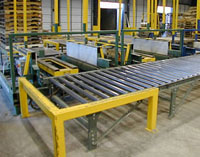How Do I Install Protection Barriers
The types of protection barriers that can be permanently installed in a location include:
- Winged, folding and telescopic parking posts
- Wall mounted stretch barriers
- Impact barriers
How Do I Install Winged, Folding or Telescopic Parking Posts?
All three of these parking posts operate in a similar manner. However, their slightly different features means each one is the best fit for specific applications. Winged and folding parking posts are generally used for individual parking spaces. Both have a special joint that allows them to stand upright or be pushed so they lay flat on the ground. There are two main reasons this functionality is very useful. Upright winged or folding posts can be used to keep unauthorized vehicles out of reserved parking spaces.
The other way that either type of post can be used is once a vehicle is in its reserved spot, the post can be moved back to its upright position to ensure the vehicle is completely secure while it's parked. In most cases, winged parking posts are used at the back of a reserved spot, while folding posts are used at the front. The main difference between those two parking posts and a telescopic one is the telescopic post doesn't just bend over to the ground.
Instead, this post can actually be pushed down into the ground to grant access to an area. Because vehicles can drive over a pushed down telescopic post at any angle, this type of barrier is most often used to restrict or grant access to an entire parking lot. To install any of these parking posts, the base plate is simply bolted into the ground. If a winged or folding post is being installed, it's usually done in the middle of a parking spot's two lines.
What are the Installation Instructions for Wall Mounted Stretch Barriers?
This type of protection barrier is most commonly used when there is an ongoing need to restrict or allow access to a specific building or individual room. While wall mounted stretch barriers use the same type of tape as stretch barrier posts, the advantage is they don't need to be moved around or set up again. Installation of wall mounted stretch barriers is easy to do. Because they already feature a wall clip, screws simply need to put through the holes in this clip and then drilled into the side of the wall where the barrier is going to be mounted.
How are Impact Barriers Installed?
Impact barriers are generally installed on or near roads. Because these barriers normally feature bright colors like orange, they are used to alert drivers to an upcoming hazard or other change on the road. The advantage of impact barriers is because of a special joint in their base, if a driver accidentally hits one, it will immediately spring back to an upright position. Installation of impact barriers can be done with an epoxy resin adhesive. For the securest fit, it’s recommended to reinforce the installation with 1 to 3 bolts.

